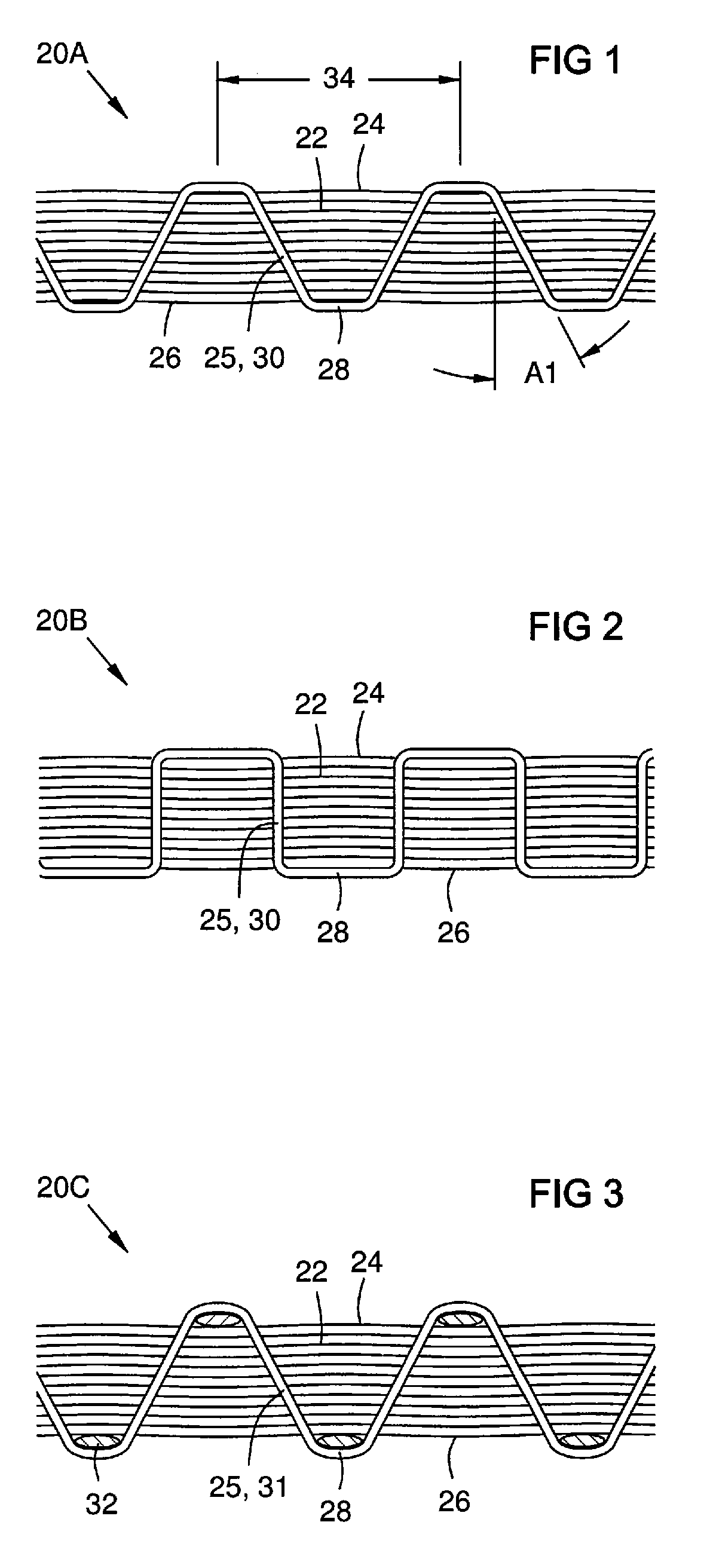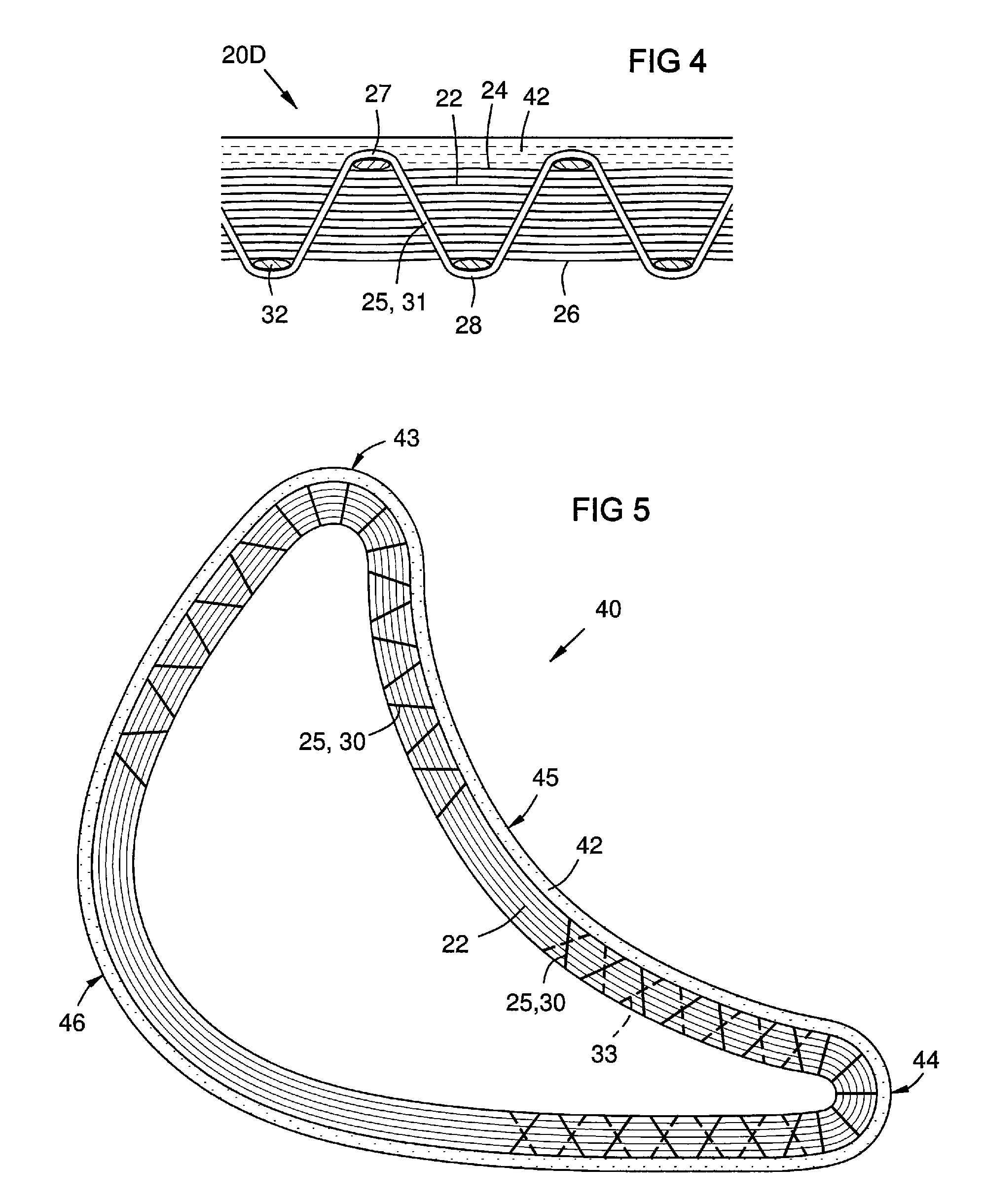Ceramic matrix composite wall with post laminate stitching
a composite wall and ceramic matrix technology, applied in the field of ceramic matrix composite walls, can solve the problems of high cost, high cost, and inability to achieve oxide-based cmcs without considerable investment, and achieve the effects of reducing the cost of brittle fiber preform, high cost, and high cos
- Summary
- Abstract
- Description
- Claims
- Application Information
AI Technical Summary
Problems solved by technology
Method used
Image
Examples
Embodiment Construction
[0022]The invention provides selective through-thickness reinforcement applied to a CMC laminated wall after the laminae are stacked and partially or fully cured. Holes may be formed in the wall after at least partial curing, and a ceramic fiber thread is passed through the holes to form a row of stitches. The thread is infiltrated with a wet ceramic matrix before or after stitching, and then heated / cured after stitching. The ceramic fibers and matrix of the thread shrink during firing, thus creating a tensile preload in the stitches. Selection of a firing temperature for the CMC wall, and selection of the type of thread fiber determines the amount of tensile preload created.
[0023]For example, bisque firing of the CMC wall can partially shrink the wall in order to leave a remaining shrinkage approximately equal to the full shrinkage of a thermal barrier coating (TBC) during a final curing. The present stitching may be done after the bisque firing and before applying the TBC. If wet ...
PUM
| Property | Measurement | Unit |
|---|---|---|
| thicknesses | aaaaa | aaaaa |
| size | aaaaa | aaaaa |
| diameter | aaaaa | aaaaa |
Abstract
Description
Claims
Application Information
 Login to View More
Login to View More - R&D
- Intellectual Property
- Life Sciences
- Materials
- Tech Scout
- Unparalleled Data Quality
- Higher Quality Content
- 60% Fewer Hallucinations
Browse by: Latest US Patents, China's latest patents, Technical Efficacy Thesaurus, Application Domain, Technology Topic, Popular Technical Reports.
© 2025 PatSnap. All rights reserved.Legal|Privacy policy|Modern Slavery Act Transparency Statement|Sitemap|About US| Contact US: help@patsnap.com



